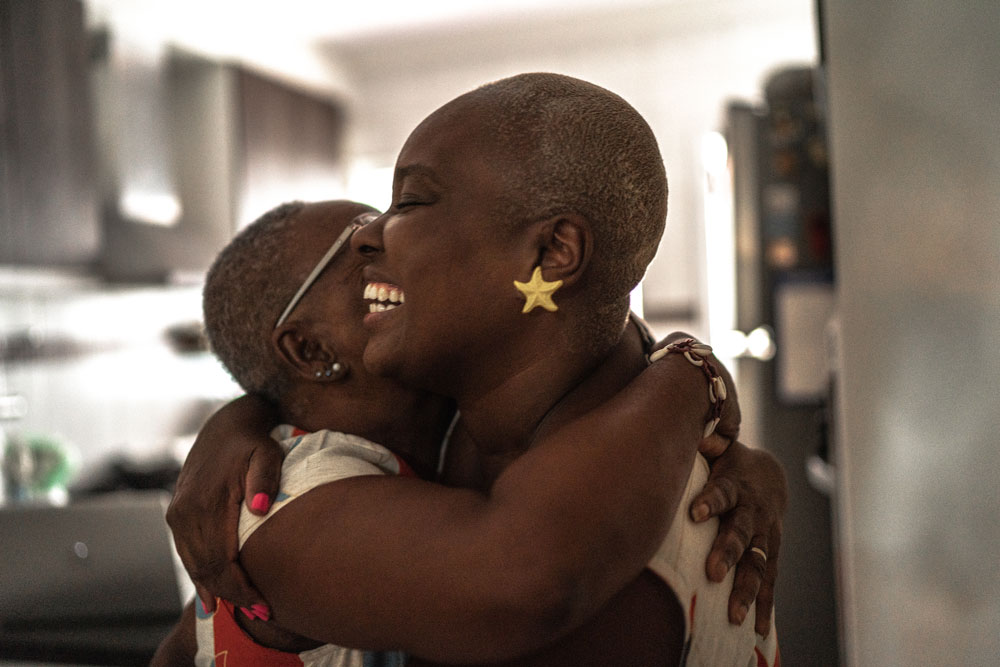Including patients in DCT design
In designing any clinical study, teams strive to anticipate patient preferences and address potential barriers. This kind of patient-focused design is particularly important in decentralized trials (DCTs), which move study activities away from sites and into or close to patients’ homes. Because many aspects of DCTs can occur in personal spaces, we want patients to be comfortable with a trial’s remote technology, the frequency and duration of in-home nursing visits, and the process for at-home supply delivery, among other considerations.
By proactively obtaining participant input into study planning, we get feedback on what patients and their caregivers prefer in terms of study design and practical support. This knowledge helps us optimize the patient experience and reduce barriers to participation, which can enhance recruitment and retention. Simply put, early patient engagement leads to smarter DCT design. We saw this principle in action during a recent DCT in adolescent asthma, deployed in partnership with AstraZeneca.
From the outset, our team across both organizations faced two major challenges. First, the pharmacokinetic study would require multiple 12-hour blood sampling appointments over the course of the clinical trial. Such a significant time commitment could be a barrier for potential participants or their caregivers. Second, we needed to enroll adolescents — a group that is often challenging to recruit given their academic and activity schedules and the equally busy schedules of their families.
To accommodate teen patients and their families, we chose a decentralized approach for this study. We wanted to bring study activities to patients rather than asking them to travel to study sites for day-long visits.
But before we acted on our plan, we proactively vetted our ideas with the teens we hoped to recruit. “We needed to be certain that a decentralized approach appealed to a teen patient population,” said Evelina Björnsson, Senior Director, Study Management, AstraZeneca, who helped design the study. “We wanted to hear their thoughts before we executed on any idea.”
The feedback was clear. Two-thirds of the potential trial participants surveyed preferred a DCT — in this case, one that used home nursing, including spirometry and electrocardiograms. Knowing that most adolescents and young adults are comfortable with mobile technology, we also deployed a patient app through which participants could report doses taken, the prevalence of asthma symptoms, and any possible side effects from the medication. In addition, the app included telemedicine functionality.
Patients and study staff embraced the DCT model. The app provided investigators with the real-time data they needed for monitoring and guiding the study. And they could connect with nurses and participants via telemedicine as often as needed. Most participants also appreciated the home nursing appointments. However, as we continued enrolling patients, we heard that some teens and families were not in favor of having a nurse in their homes for such long periods of time.
Based on that feedback, we modified the protocol to include options for site-based blood sampling, letting patients choose how they would participate. “Not every patient will have the same needs,” said Karin Enarsson Ringqvist, Global Study Director, AstraZeneca. “If we’re listening, patients will tell us what works best for them. We’ve learned that if we can adapt and accommodate participants, everyone benefits.”
We’ve also learned to:
Offer a variety of possible incentives and poll patients on their priorities
In addition to soliciting patient input regarding DCTs, we asked participants what else we could do to make their lives easier. Patients and caregivers named two ways we could help: stipends and detailed information about the practicalities and logistics of the planned study. Because we had this information early in planning, we were able to act on what mattered most to patients and didn’t waste time or resources providing incentives that wouldn’t appeal to this population.
Ask for early input
Do you think your patients might prefer a DCT? Poll them prior to design. “If you're going to do a DCT, design it as [such] from the beginning,” said Evelina. Attempting to convert a traditional trial to a virtual model wastes time and resources and makes operationalization needlessly more complex. And bring your partners into the process early as well. We worked with our home nursing vendor to map out the detailed in-home process, which included the use of a centrifuge and dry ice and a shift change for the nurses involved. Our vendor’s operational knowledge and subsequent feedback significantly contributed to the success of the trial.
Seek ongoing feedback
The patient voice is particularly important during the planning stage of DCTs but there is also great value in gathering feedback at study completion. We use those insights to inform future trial design.
Our adolescent asthma DCT began enrolling prior to the COVID-19 pandemic, but we saw a huge increase in demand as the pandemic took hold. This trend is set to continue, with the virtual trials industry growing about 10 percent annually.i While DCTs won’t be appropriate in all situations, the model is incredibly valuable, making research more flexible and patient-focused. In the case of this clinical study, patients and families told us what mattered most and by using a decentralized approach, we were able to meet their needs. We also increased accessibility and expanded health equity. When we give patients a voice in clinical study design, we can tailor our research to the participants who make it possible.
i Fierce Biotech, “Virtual clinical trials market worth $8B as CROs rush to add decentralized capabilities,” 21 March 2022. [Online]. Available: https://www.fiercebiotech.com/cro/virtual-clinical-trials-market-worth-8b-cros-rush-add-decentralized-capabilities. [Accessed 12 September 2022].







